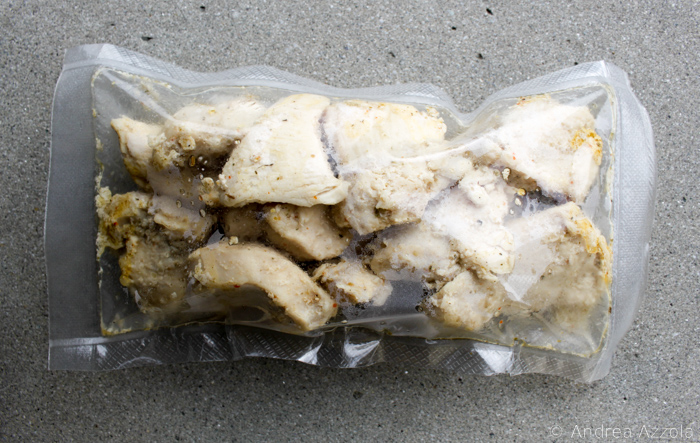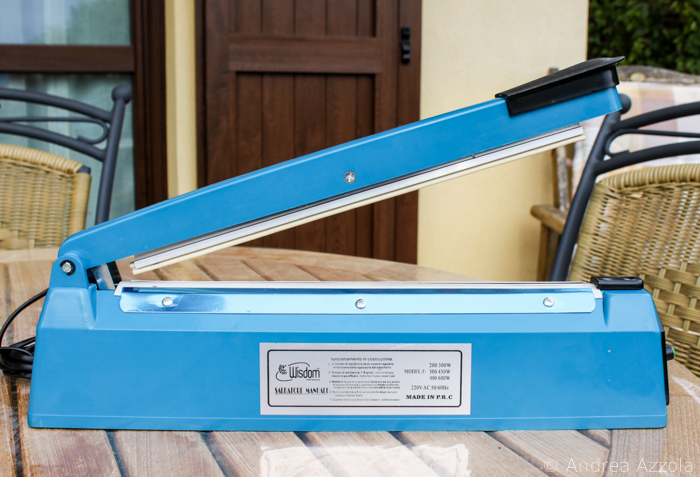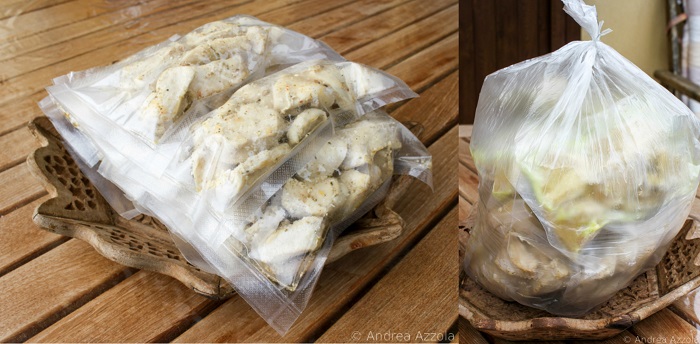Meal prepping in advance and quantity is beneficial for 3 main reasons:
- Save time: cooking, shopping and washing dishes
- Diet control: a batch of strategic meals helps fight junk food
- Save money: buying in quantity is cheaper, traveling to the supermarket only once is cheaper as well, you save on cleaning materials too

Specifically, In this article I’ll teach you how to prepare meals for several months using a practical technique that’s very easy to implement.
Meal Prep Pouches
The advantage of meal prep pouches, as opposed to classic plastic containers, are the compact space and the lesser air stored (less air equals less bacteria). The less space our meal prep pouches use the more we'll be able to store and benefit without cooking again.
As for the air that gets stored in the pouch, common sense applies: fresh food needs to be stored and frozen immediately after cooking. You can of course opt for a vacuum sealer system if you like, some people find them impractical because of the machine cost, the more expensive pouch—not all are compatible, and the long idle periods they need in order to cool down, which can be quite annoying if you're bulk sealing.

How It Works
This method requires:
I choose to buy a 12" (30 cm) food sealer—shown in the picture, if you (like me, in retrospective) don't think you'll need to make particularly large portions or objects, an 8" (20 cm) would be more than enough and also easier to put away. The price for an impulse sealer is usually around $30 shipping included.
The machine is very simple to operate: plug it into the power outlet and set the intensity thanks to the only knob available. Usually the range goes from 1 to 10, we will use 5 for standard poly tubes, while 8 for high quality rolls which usually are thicker. I encourage you to make a few attempts before beginning bulk sealing.

Food sealing rolls can be found at a discount price on most on-line generic retail sites, I recommend an 8" width for single portions, a size that is usually best for weights between 3 oz. (100 g) and 7 oz. (200 g). Smaller or larger widths may result in pouches with weird proportions that are more difficult to carry and store.
There are many roll lengths available, from 100" (3 m) to very long sizes, usually for industrial sealing. One of the most common lengths for home use is 50" (15 m) and often found in packs of 2.
I recommend starting with a couple of roll packs 8" x 50': this will help us absorb delivery costs—where provided, evaluate the roll brand and overall have a better understanding of the system and if it works for you.
You can save money by purchasing rolls at industrial length, over 200’ (60 m). Pouches built with this method, as resealing is not practical.
Rolls should also be food-grade guaranteed. If they're intended for vacuum uses, conceded that we're not strictly talking about vacuum here, they are mostly fine. Many films also support extreme high and low temperature, from freezing to microwave and boiling water level heat. I recomend taking an accurate look at product description before buying and using.

Create the first pouches singularly to practice and to avoid wasting material. Once you acquire more confidence you should be able to create them serially—as pictured above, this will save you time.
One tip for speeding up cutting: insted of cutting all the way from one side of the roll to the other, make a small incision and drag the open scissors to the other end. Be careful to not cut the seal. The poly tube is quite ductile and won't oppose much resistance.
Foods and Other Uses
Thanks to this approach it becomes very easy to manage food and quantities for a diet. If you like, you can create portions for each macro-nutrient group:
- chicken breast in curry and ginger variant as a protein source
- brown rice as an energy source with low glycemic index
- broccoli, peas and carrots for vitamins and mineals
- nuts and seeds, a healthy superfoods snack

These are just a few examples. I also use this method for preparing shake powders to be used in my post workout, I prepare them for a month, in exact quantities and improving the formula. In this way I reduce the chance to forget to take them and I can carry them with me anywhere anytime.
You can also store leftovers, a succulent meal that you want to taste a second time. Also create ice bags, waterproofing electronical devices and cardboard items, painting items, quilting materials, parts etc...